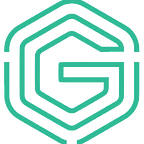Web 3.0: What Is It?
The new generation Internet is something that will adapt itself perfectly to the needs of the modern user, understand everything that you transmit, and provide all the relevant content in the most relevant format. And the prospects for something like this are closer than ever, as developers around the world are working on the evolution of the Internet, creating Web 3.0.
All the Basics of Web 3.0
Simply put, Web 3.0 is the third generation of the Internet, where automatic information processing takes place as seamlessly as possible. The main technologies that are used in this project include:
- Machine learning;
- Big data;
- Technologies of decentralized registries.
The main goal of developing Web 3.0 is to create a more autonomous, open, and intelligent Internet, where users and machines can easily interact with data. Even though the project is still not completed (although it’s actively moving forward rapidly), many companies are already releasing special developments, called special Web 3.0 systems, such as Grapherex.
Web 3.0 Key Features
To understand why Web 3.0 is better and more efficient than Web 1.0 (1989–2005) and Web 2.0 (2005-present), it is worth learning about the key characteristics of the innovative generation of the Internet:
- Omnipresence: it will be available anywhere and anytime.
- Perfect semantic web: rational analysis of text data in the web and improvement of its understanding.
- Artificial Intelligence: machines will be able to efficiently read and decipher meaning and emotions, for example, for making unbiased reviews of various services and products.
- The superiority of 3D graphics over ordinary illustrations: the destruction of the boundaries between the physical and digital shell of graphic technologies.
Web 3.0 Applications
A fairly large number of companies are trying to create products based on the requirements for Web 3.0 applications in order to make them more competitive and convenient for the modern user. The best-known requirement for this type of add-on is the ability to correctly process huge amounts of information and turn it into usable knowledge, structured databases, and useful blocks for customers.
Here are some popular Web 3.0 applications that you may have heard about:
- Grapherex combines an innovative financial ecosystem, a private encrypted messenger, a secure multi-currency wallet, NFT collection management, and convenient cryptocurrency exchange on one platform.
- Siri is Apple’s permanent voice assistant powered by artificial intelligence. If at first, it was a banal voice recognition system, now the development of the module has made it possible to add the ability to execute various complex and personalized commands. Alexa and Bixby can be added to the same category.
- Wolfram Alpha is a popular computing machine that can answer user questions with calculations rather than just providing a list of pages with relevant information on a given topic, as most search engines like Google do. This tool is just perfect for hands-on comparison or research on specific topics.
- NFT (Non-Fungible Token) are tokens with a cryptographic hash created for any unique item. Some of the examples are paintings, photos, videos, music, gifs — any content that claims to be at least some kind of uniqueness.
- DeFi are financial instruments (services and apps) created on the blockchain. The goal of decentralized finance is to become an alternative to the banking sector and replace the traditional technologies of the current financial system with open source protocols.
- Cryptocurrencies like Bitcoin, Ethereum Ripple, and others, are Web 3.0 applications that aim to revolutionize the financial system and make it decentralised.
- DAOs are a form of organization and management in the blockchain environment. DAOs are needed to keep blockchain projects alive.
Web 3.0 vs. Web 2.0
The main difference between Web 3.0 and Web 2.0 is that the former places AI and machine learning at the center of its attention. They use these technologies to provide users with personalised content for each user instead of just the content other end users have provided. To put it simply, Web 2.0 is made for users to contribute and interact. while Web 3.0 will solve this using AI technologies, as well as focus on decentralized services.
Final Thoughts
As you can see, the very idea of creating a full-fledged Web 3.0 is a way to get a more personalized Internet that will fully meet the needs of modern users. It is still difficult to say when the project will be finally completed and when it will be possible to claim that the era of Web 2.0 has come to an end, but this moment is inevitably approaching.
